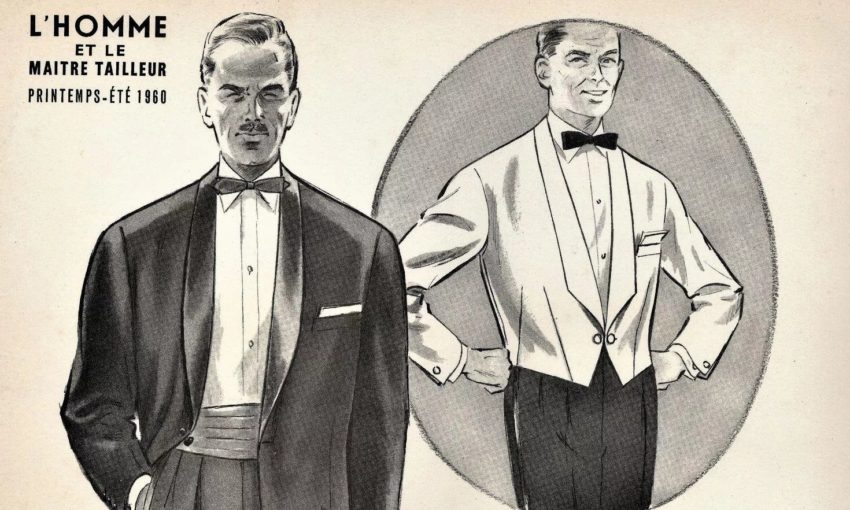Every prom season, high schoolers all over America make their feeble attempts at formal wear. Well, technically semi-formal wear 1. But for anyone trying on their first tuxedo, you may be wondering, ‘What’s with the girdle? Who am I, Captain Kirk?’ Well, that girdle is called a cummerbund, and it’s a tradition of proms across the nation. By the way, prom is short for promenade. Classy, huh?
The Indian Kamarband
What we in English call a cummerbund began life as an Indian sash called a kamarband. The British first encountered the kamarband during their colonial days in the 1800s. This account from a British Navy doctor describes its early use:
The turban and cummerbund meet our eye at every step:—the former, to defend the head from the direct rays of a powerful sun; the latter, apparently, for the purpose of preserving the important viscera of the abdomen from the deleterious impressions of the cold. This [cummerbund] is certainly a most valuable part of their dress; and one that is highly deserving of imitation. 2
Kamarband in Hindi literally means ‘loin band’ 3, and during the Victorian Era the British military brought this stylish shash back home from India where it became a classic of western menswear. Spellings have varied over the decades from kamar-band to kummerbund to cummerband (as used in the source above) until the current cummerbund finally won out. Neither ‘cumberbun’ nor ‘cumberbatch’ have ever been correct.
The pleats in the modern cummerbund imitate the folds of the original kamarband sash. It’s a common myth that these pleats are used to catch crumbs, but come on. Classic menswear is much cooler than that. Really, they were historically used to hide opera tickets, knives, and fat stacks of cash.
The Cummerbund and Tuxedo Customs
In formal and semi-formal menswear, you’ll notice many methods of hiding seams, softening transitions and simplifying silhouettes. This is how tailors create formality. It’s why ‘tuxedo pants’ have a braid or ribbon covering the side seam. And it’s why ‘tuxedo shirts’ don’t have a center placket. They are designed to be smooth and seamless. And this is the purpose of the cummerbund: to soften the transition from the shirt to the trousers.
And speaking of tuxedos, the word tuxedo gets its name from Tuxedo Park in upstate New York—and ultimately from a Lenape word meaning ‘crooked river’. Emily Post, the American authority on etiquette, and former resident of Tuxedo Park, said in her book of manners:
The Tuxedo, which is the essential evening dress of a gentleman, is simply the English dinner coat. It was first introduced in this country at the Tuxedo Club to provide something less formal than the swallow-tail, and the name has clung ever since. 4
The tuxedo was born in the lavish promenades of Tuxedo Park, New York. And the cummerbund in English occupied India. But no one has yet been able to tell me where we get the ‘Bandersnatch Cummerbund’. I suppose some mysteries are not meant to be solved.
- “White tie vs. black tie” | GQ
- Johnson, MD, James | “Dress” | Part III: “Tropical Hygiene” | The Influence of Tropical Climates on European Constitutions | 1818
- “Cummerbund” | Online Etymology Dictionary
- Post, Emily | Chapter XXXIV: “The Clothes of a Gentleman” | Etiquette in Society, in Business, in Politics and at Home | 1922

